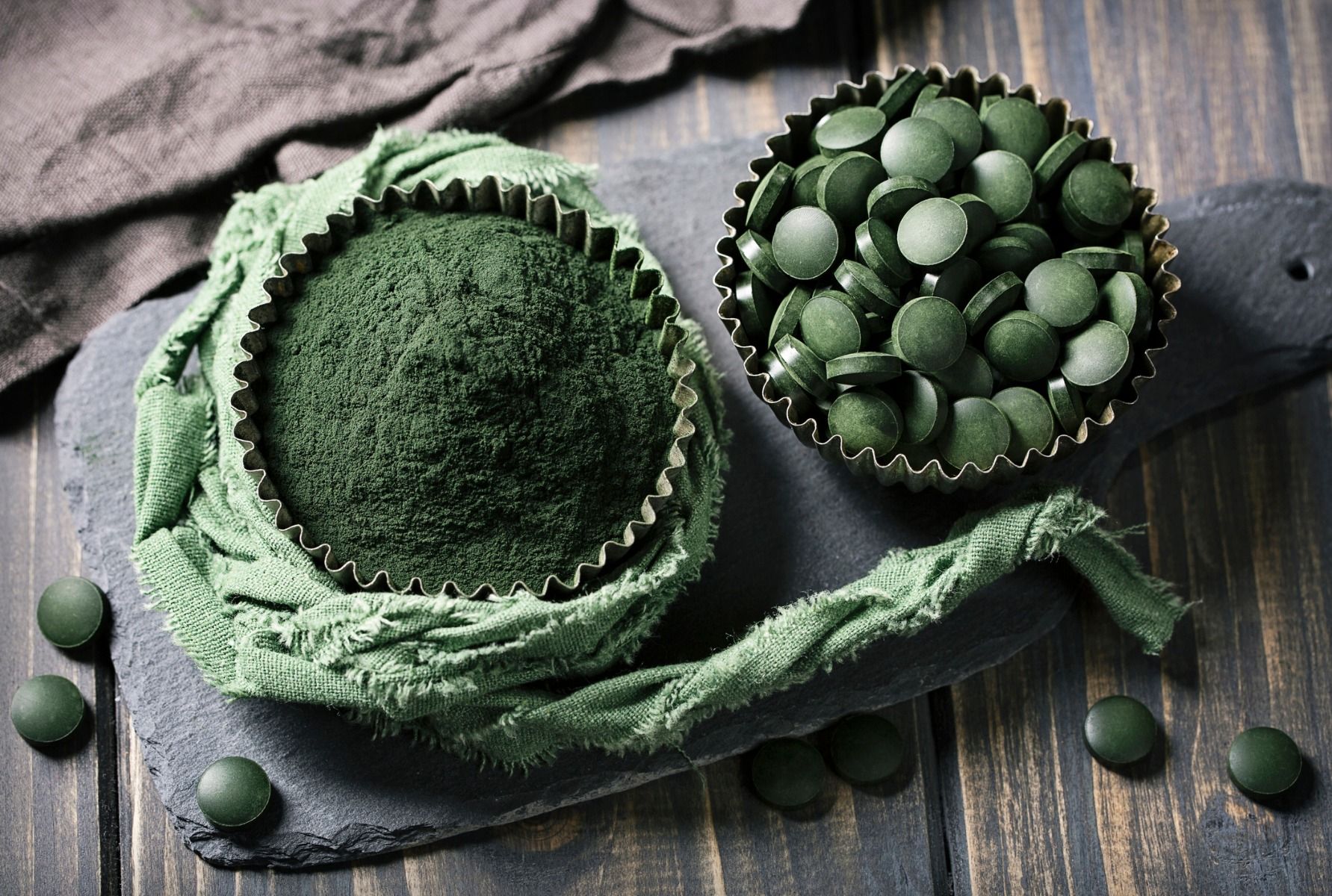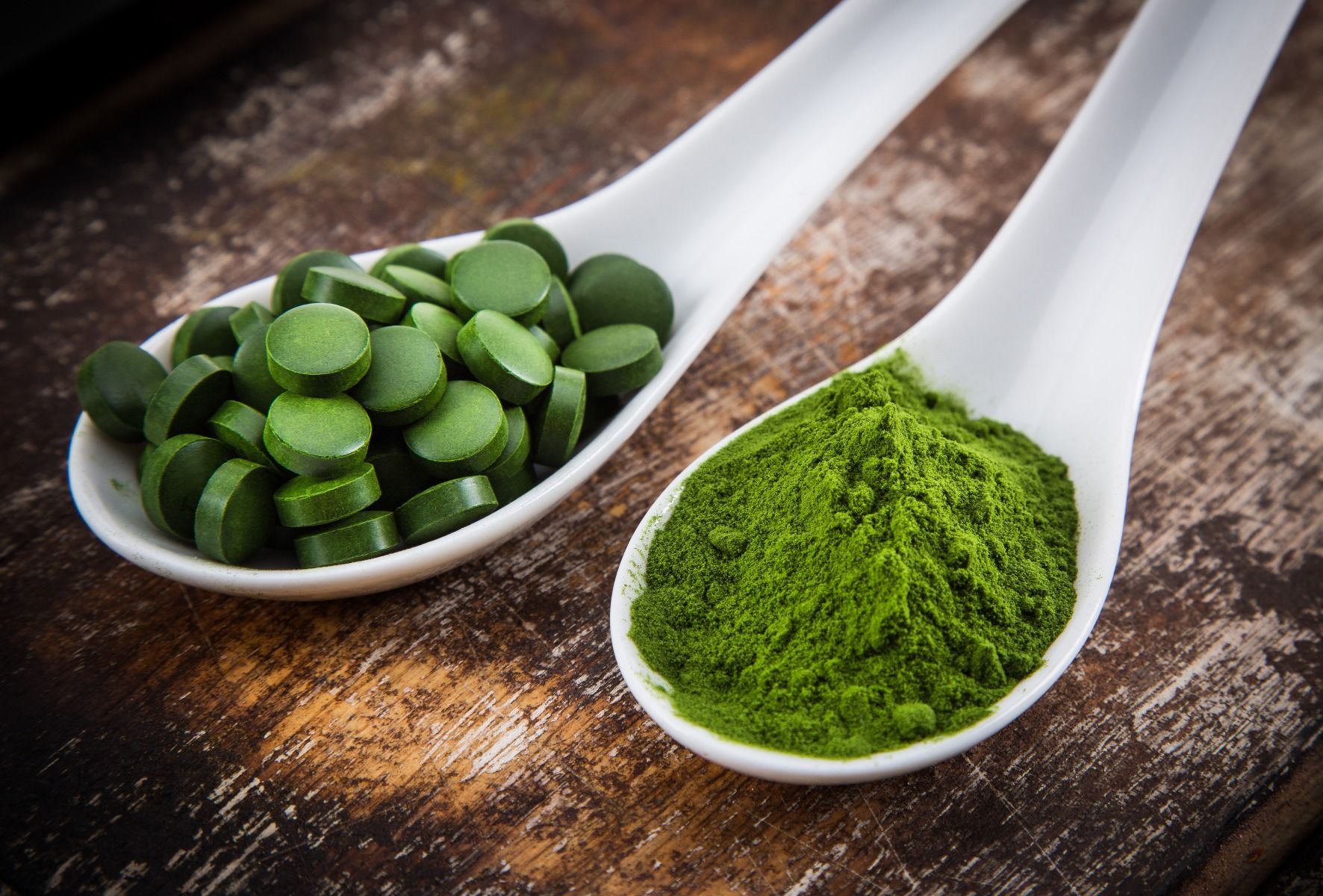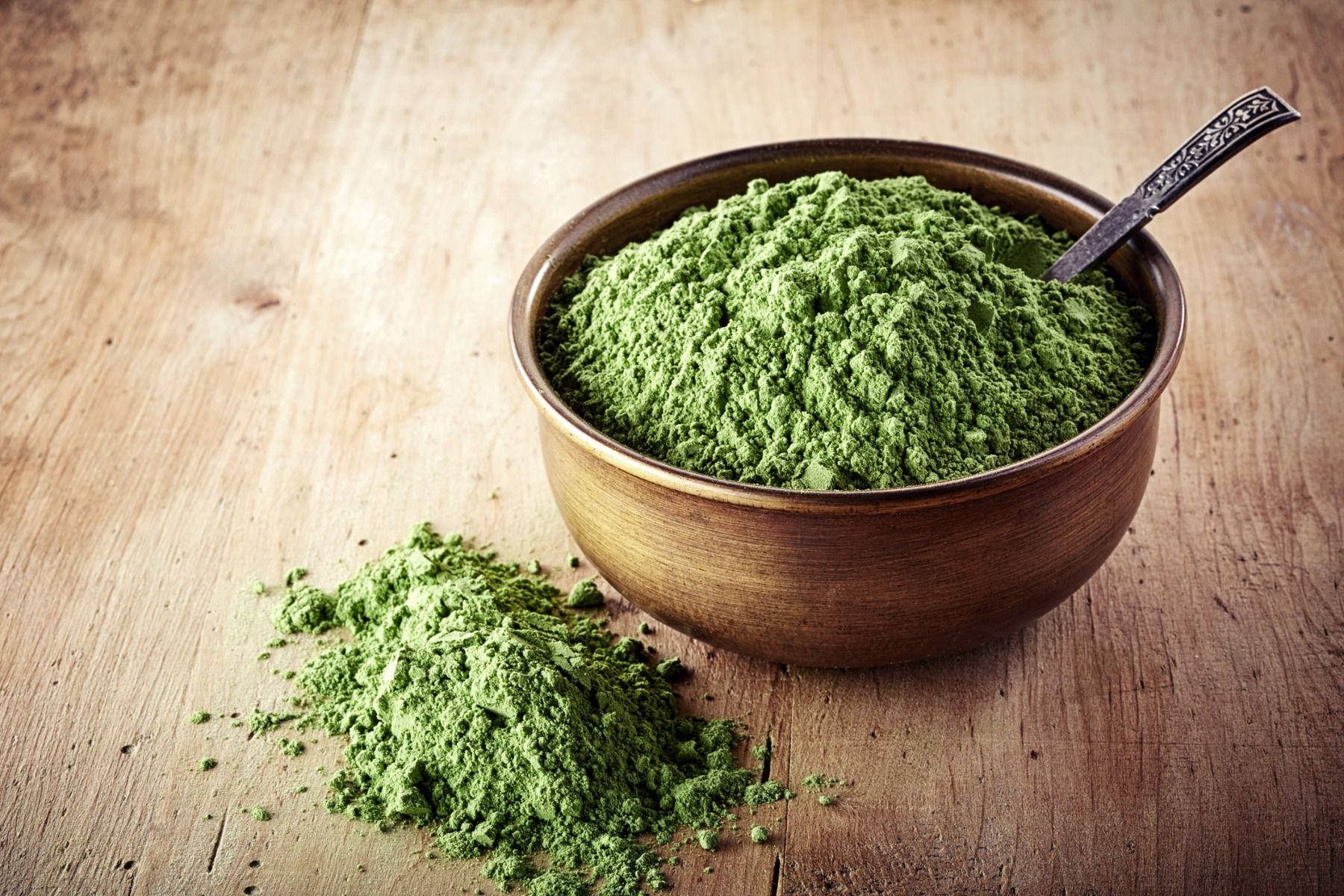Table of Contents
Chlorella is an emerald nutritive treasure, which has a countless number of benefits for the human body. But are there also any negative effects which we should be careful about when taking chlorella?
What Lies Behind the Name Chlorella?
Chlorella is unicellular freshwater algae, which is known as a vegan source of iron and biologically available vitamin B12 (cobalamin). [1] For its high amount of chlorophyll, usually about 1,3% of dry weight, it is typical for its saturated emerald green colour. [2]
As it consists of amino acids, protein, chlorophyll, vitamins, minerals, fibre and a unique growth factor known as phytonutrient (CGF), it is considered as a nutritional wealth. Besides, this algae also contains fatty saturated acids such as palmitate, laurate or myristate. [3] Interestingly, the protein found in chlorella consists of a relatively high amount of leucine – up to 7.3%. [4] Leucine is known as the most important anti-catabolic amino acid. Chlorella, however, can also act as a strong antioxidant that helps the body to eliminate heavy metals. [5]

Chlorella and Its Nutritional Values
- Protein – Chlorella contains from 50 to 60% of protein. It is a complete protein source as it contains all 9 essential amino acids.
- Vitamin B12 – Chlorella consists of biologically available vitamin B12 (cobalamin).
- Iron and vitamin C – It is a good source of iron, the amount of which can be supplemented daily by 6 to 40%. It is also a great source of vitamin C, which helps to absorb the iron.
- Vitamins a minerals – Chlorella also contains components of magnesium, zinc, potassium, calcium, copper, folic acids and B vitamins.
- Omega-3 fatty acids – Just as other algae, it contains omega-3 fatty acids. Only 3 grams of chlorella contain up to 100 grams of omega-3.
- Fibre – In more significant amounts, it is an abundant source of fibre. [6]
You might be interested in these products:
What are the effects of chlorella on the human body?
1. Strengthens the immune system
Chlorella can naturally strengthen the immunity of the organism against illnesses by supporting the creation of immune cells – for example, interferon. [7] Besides, it also contains vitamin C, which is perhaps the best known of all vitamins. It fights against infections and supports the right functioning of the immune system.
2. It helps the body to get rid of heavy metals
Among the plants is chlorella one of the strongest warriors against heavy metals that can be found in the body. It is also able to remove pollutants which have been settling in the body for a long time, such as lead, mercury, or uranium and prevents their absorption. According to one study focused on people suffering from alcoholism and people who smoked cigarettes daily showed that taking 6.3 grams of chlorella during 6 weeks increased the amount of vitamin C (44%) and E (15.7%). It was also found that chlorella helped to increase two antioxidant enzymes in the body that are produced in red blood cells. [8]

3. It is effective with fat loss and lowers cholesterol
There is a study within which 9 grams of chlorella was administered (2x 4.5 grams per day) to a group of people, including those with and without obesity. During these 12 weeks, it was found out that all participants had statistically significant reductions in body fat, fasting blood glucose level and serum cholesterol. [9]
It was shown that chlorella also affects the precise regulation of hormones and metabolism. The correct functioning of these processes leads to increased energy and improved blood circulation, which can serve as a support in fat loss and fat burning. [10]

4. It supports brain activity and improves memory
Due to vitamin B12, which chlorella contains, it contributes to the proper functioning of a brain and improves memory. It is one of the few plants that consists of this vitamin. According to a study done on advanced-age mice, regular intake of chlorella improved their memory, as well as, spacial and visual recognition. [11]
5. Effective in fibromyalgia treatment
Fibromyalgia is an illness in which the patient suffers from the intense pain of joints, muscles and tendons. In addition to these symptoms, the disease is accompanied by changes in the levels of certain chemicals in the brain and central nervous system.
One study showed that when taking 10 grams of chlorella daily during the period of two months, 18 people with fibromyalgia showed a pain reduction of up to 22%. Some of the patients showed a pain reduction of up to 25%, and two individuals have seen a decline in joint, muscle and tendons pain of up to 50%. [12]

6. Fights against anaemia
Anaemia is one of the most common blood diseases. The point is that the body does not have enough red blood cells and blood pigment. [13] What helps when curring this disease is the regular iron intake, but as it has been shown, chlorella may also be adequate.
A study focused on the increase of haemoglobin, red blood cells and iron was first tested on laboratory mice, which showed an increase in all three factors. After that, the study was applied to pregnant women receiving 6 grams of chlorella daily. An increase in haemoglobin by 5.6%, hematocrits (laboratory value describing the proportion of red blood cells in total blood volume) by 6.3% and red blood cells by 4.7%. [14]
What Forms of Chlorella Do We Know?
Chlorella is most commonly available in two forms: tablets and powder.

Many people prefer the tablet form as they do not taste such a distinctive taste of chlorella. However, also the powder form can be used effectively, for example in smoothies, fruit drinks or meals in which you are not able to taste it and supply the body with necessary nutrients.
Chlorella vs Spirulina
People often have mistaken these two concepts, and it is difficult for them to decide which nutritional supplement would be more advantageous. That is why we have prepared for you the differences that make these two green nutritional miracles no longer mistaken.
- Chlorella is unicellular algae of emerald colour.
- Spirulina is blue-green multicellular cyanobacteria without a nucleus.
- Chlorella has a round shape, spirulina spiral.
- Chlorella has an indigestible wall, while spirulina is characterised by a digestible wall.
- Chlorella contains double the amount of chlorophyll as spirulina.
Chlorella and spirulina are valuable supplements which contain essential amino acids, iron, proteins, vitamins and minerals. The great advantage of chlorella is that it has no side effects. On the contrary, with spirulina, you have to be careful with the quality of the product, as spirulina from dirty and contaminated water can cause stomach ache, vomiting, nausea, or palpitations.

What Is the Recommended Daily Dose of Chlorella?
Recommended daily dose of chlorella is between 6 to 10 grams. It has been shown that chlorella was the most effective at this dose. Higher doses of chlorella were not scientifically tested; therefore, the effects on the human body are unknown. [15] Certainly, here also applies that when it comes to a nutritional supplement, the information provided on the label should be followed.

Does Chlorella Also Have Side Effects?
From a scientific point of view, no side effects were detected at the recommended daily dose, which is a positive finding for everyone who wants to start using chlorella. However, as mentioned above, we should take into account the information on the label in case of each nutritional supplement to prevent possible side effects, which may cause you unnecessary troubles.
We believe that this article helped you to get to know more about chlorella and its effects on the human body. What is your experience with chlorella? Write it into the comment, and in case you liked it, support us by sharing this article.
[1] Watanabe F, Takenaka S, Katsura H, Miyamoto E, Abe K, Tamura Y, Nakatsuka T, Nakano Y. -Characterization of a vitamin B12 compound in the edible purple laver, Porphyra yezoensis. - Bioresour Technol. 2014 (dostupné online) – https://www.ncbi.nlm.nih.gov/pubmed/24785789
[2] Park JY, Choi SA, Jeong MJ, Nam B, Oh YK, Lee JS. - Changes in fatty acid composition of Chlorella vulgaris by hypochlorous acid. - Bioresour Technol. 2014 (dostupné online) – https://www.ncbi.nlm.nih.gov/pubmed/24785789
[3] Wawrik B, Harriman BH. - Rapid, colorimetric quantification of lipid from algal cultures. - J Microbiol Methods. 2010 (dostupné online) – https://www.ncbi.nlm.nih.gov/pubmed/20093146
[4] Mišurcová L, Buňka F, Vávra Ambrožová J, Machů L, Samek D, Kráčmar S. - Amino acid composition of algal products and its contribution to RDI. Food Chem. 2014 (dostupné online) – https://www.ncbi.nlm.nih.gov/pubmed/24423510
[5] Uchikawa T, Maruyama I, Kumamoto S, Ando Y, Yasutake A. - Chlorella suppresses methylmercury transfer to the fetus in pregnant mice. -J Toxicol Sci. 2011 (dostupné online) – https://www.ncbi.nlm.nih.gov/pubmed/22008543
[6] 9 Impressive Health Benefits of Chlorella - (dostupné online ) – https://www.healthline.com/nutrition/benefits-of-chlorella
[7] Lamm ME, Nedrud JG, Kaetzel CS, Mazanec MB. - IgA and mucosal defense. - APMIS. 1995 (dostupné online) – https://www.ncbi.nlm.nih.gov/pubmed/7612253
[8] Rai UN1, Singh NK, Upadhyay AK, Verma S.- Chromate tolerance and accumulation in Chlorella vulgaris L.: role of antioxidant enzymes and biochemical changes in detoxification of metals. - Bioresour Technol. 2013 (dostupné online) – https://www.ncbi.nlm.nih.gov/pubmed/23567737
[9] Mizoguchi T1, Takehara I, Masuzawa T, Saito T, Naoki Y. - Nutrigenomic studies of effects of Chlorella on subjects with high-risk factors for lifestyle-related disease. J Med Food. 2008 (dostupné online) – https://www.ncbi.nlm.nih.gov/pubmed/18800884
[10] YuyaIkurohOhsawabcFumikoKonishiaTakashiHasegawaaShoichiroKumamotoaYoshihikoSuzukibShigeoOhtab - Preventive effects of Chlorella on cognitive decline in age-dependent dementia model mice - Neuroscience Letters Volume 464, Issue 3, 30 October 2009, Pages 193-198 (dostupné online) – https://www.sciencedirect.com/science/article/abs/pii/S0304394009011367
[11] Nakashima Y, Ohsawa I, Konishi F, Hasegawa T, Kumamoto S, Suzuki Y, Ohta S. - Preventive effects of Chlorella on cognitive decline in age-dependent dementia model mice. - Neurosci Lett. 2009 (dostupné online) – https://www.ncbi.nlm.nih.gov/pubmed/19699777
[12] Merchant RE, Carmack CA, Wise CM - Nutritional supplementation with Chlorella pyrenoidosa for patients with fibromyalgia syndrome: a pilot study. Phytother Res. 2000 (dostupné online) – https://www.ncbi.nlm.nih.gov/pubmed/10815009
[13] SARAH L. MORGAN, MD, JOSEPH E. BAGGOTT, PhD - 26 - Anemias - Handbook of Clinical Nutrition (Fourth Edition) 2006, Pages 523–540 (dostupné online) – https://www.sciencedirect.com/science/article/pii/B9780323039529500325
[14] Nakano S1, Takekoshi H, Nakano M. - Chlorella pyrenoidosa supplementation reduces the risk of anemia, proteinuria and edema in pregnant women. Plant Foods Hum Nutr. 2010 (dostupné online) – https://www.ncbi.nlm.nih.gov/pubmed/20013055
[15] Lee IT, Lee WJ, Tsai CM, Su IJ, Yen HT, Sheu WH. - Combined extractives of red yeast rice, bitter gourd, chlorella, soy protein, and licorice improve total cholesterol, low-density lipoprotein cholesterol, and triglyceride in subjects with metabolic syndrome. Nutr Res. 2012 (dostupné online) – https://www.ncbi.nlm.nih.gov/pubmed/22348456

